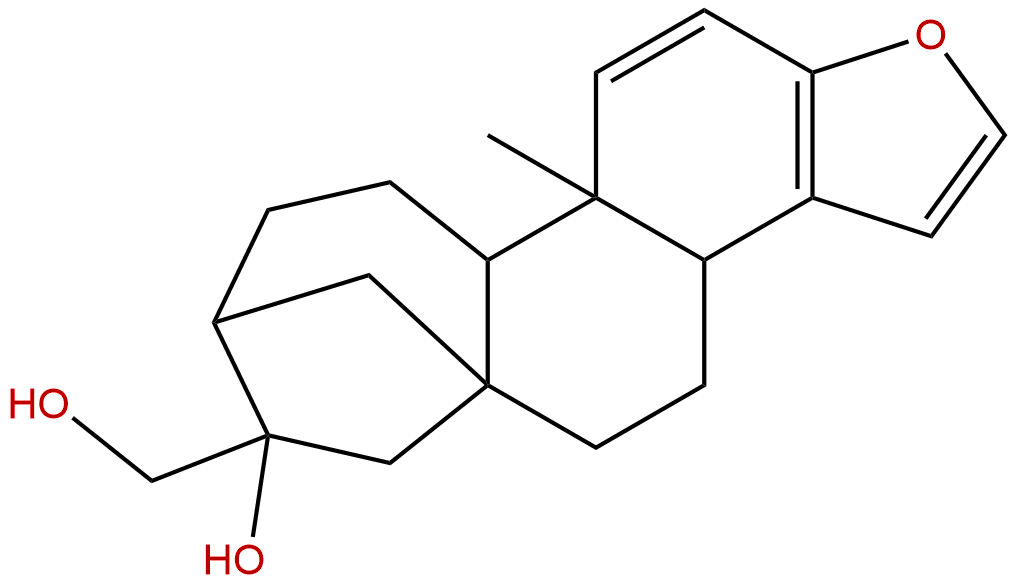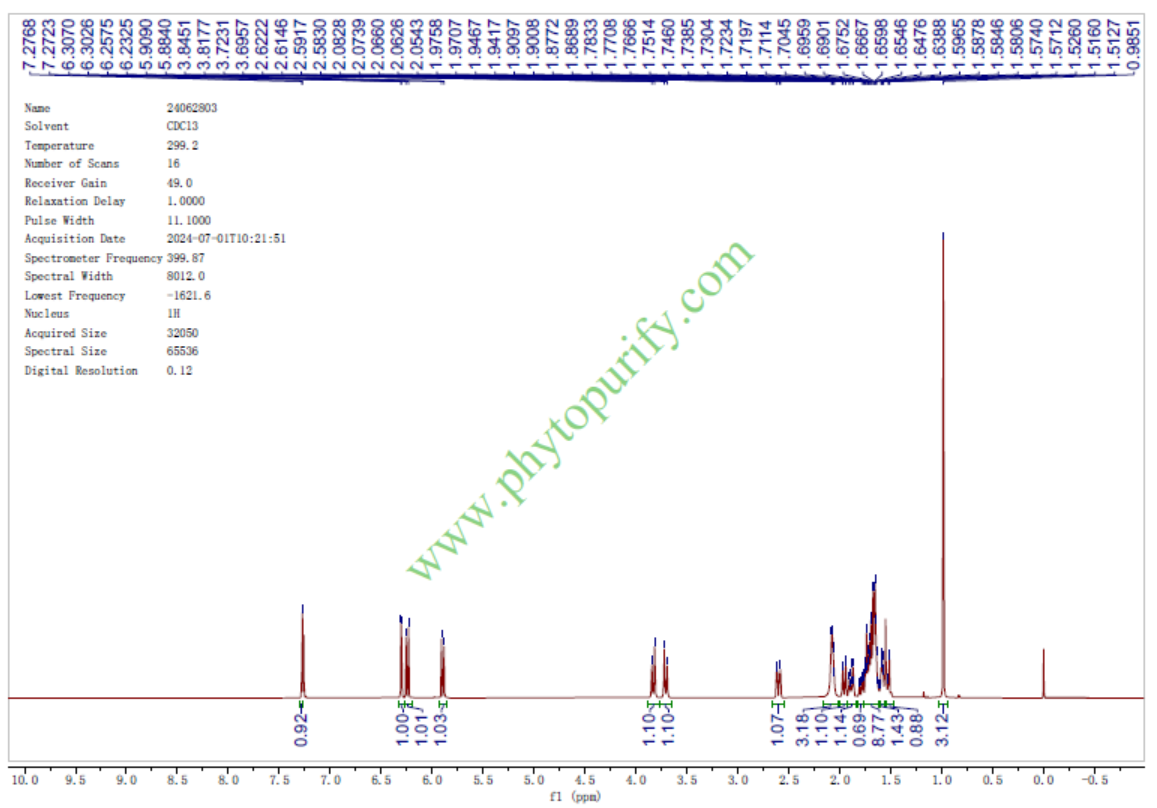
KahweolCAS No.:6894-43-5
|
||||||||||
 |
|
|
||||||||

| Catalogue No.: | BP1764 |
| Formula: | C20H26O3 |
| Mol Weight: | 314.425 |
Product name: Kahweol
Synonym name:
Catalogue No.: BP1764
Cas No.: 6894-43-5
Formula: C20H26O3
Mol Weight: 314.425
Botanical Source: Coffea Bean
Physical Description:
Type of Compound:
Purity: 95%~99%
Analysis Method: HPLC-DAD or/and HPLC-ELSD
Identification Method: Mass, NMR
Packing: Brown vial or HDPE plastic bottle
The product could be supplied from milligrams to grams. Inquire for bulk scale.
We provide solution to improve the water-solubility of compounds, thereby facilitating the variety of activity tests and clinic uses.
For Reference Standard and R&D, Not for Human Use Directly.
Description:
Kahweol has anticarcinogenic, anti-angiogenic,and anti-inflammatory activities, it can block the LPS-induced activation of NF-kappaB by preventing IkappaB degradation and inhibiting IkappaB kinase activity. Kahweol also has hepatoprotective and antioxidant effects on carbon tetrachloride-induced liver damage in mice.
References:
Food Chem Toxicol. 2007 Nov;45(11):2118-25.
Hepatoprotective and antioxidant effects of the coffee diterpenes kahweol and cafestol on carbon tetrachloride-induced liver damage in mice.
The hepatoprotective effects of Kahweol and cafestol, coffee-specific diterpenes, on the carbon tetrachloride (CCl(4))-induced liver damage as well as the possible mechanisms involved in these protections were investigated.
METHODS AND RESULTS:
Pretreatment with Kahweol and cafestol prior to the administration of CCl(4) significantly prevented the increase in the serum levels of hepatic enzyme markers (alanine aminotransferase and aspartate aminotransferase) and reduced oxidative stress, such as reduced glutathione content and lipid peroxidation, in the liver in a dose-dependent manner. The histopathological evaluation of the livers also revealed that Kahweol and cafestol reduced the incidence of liver lesions induced by CCl(4). Treatment of the mice with Kahweol and cafestol also resulted in a significant decrease in the cytochrome P450 2E1 (CYP2E1), the major isozyme involved in CCl(4) bioactivation, specific enzyme activities, such as p-nitrophenol and aniline hydroxylation. Kahweol and cafestol exhibited antioxidant effects on FeCl(2)-ascorbate induced lipid peroxidation in a mouse liver homogenate, and on superoxide radical scavenging activity.
CONCLUSIONS:
These results suggest that the protective effects of Kahweol and cafestol against the CCl(4)-induced hepatotoxicity possibly involve mechanisms related to their ability to block the CYP2E1-mediated CCl(4) bioactivation and free radical scavenging effects.
PLoS One. 2011;6(8):e23407.
Anti-angiogenic and anti-inflammatory properties of kahweol, a coffee diterpene.
Epidemiological studies have shown that unfiltered coffee consumption is associated with a low incidence of cancer. This study aims to identify the effects of Kahweol, an antioxidant diterpene contained in unfiltered coffee, on angiogenesis and key inflammatory molecules.
METHODS AND RESULTS:
The experimental procedures included in vivo angiogenesis assays (both the chicken and quail choriallantoic membrane assay and the angiogenesis assay with fluorescent zebrafish), the ex vivo mouse aortic ring assay and the in vitro analysis of the effects of treatment of human endothelial cells with Kahweol in cell growth, cell viability, cell migration and zymographic assays, as well as the tube formation assay on Matrigel. Additionally, two inflammation markers were determined, namely, the expression levels of cyclooxygenase 2 and the levels of secreted monocyte chemoattractant protein-1. We show for the first time that Kahweol is an anti-angiogenic compound with inhibitory effects in two in vivo and one ex vivo angiogenesis models, with effects on specific steps of the angiogenic process: endothelial cell proliferation, migration, invasion and tube formation on Matrigel. We also demonstrate the inhibitory effect of Kahweol on the endothelial cell potential to remodel extracellular matrix by targeting two key molecules involved in the process, MMP-2 and uPA. Finally, the anti-inflammatory potential of this compound is demonstrated by its inhibition of both COX-2 expression and MCP-1 secretion in endothelial cells.
CONCLUSIONS:
Taken together, our data indicate that, indeed, Kahweol behaves as an anti-inflammatory and anti-angiogenic compound with potential use in antitumoral therapies. These data may contribute to the explanation of the reported antitumoral effects of Kahweol, including the recent epidemiological meta-analysis showing that drinking coffee could decrease the risk of certain cancers.
HPLC of Kahweol

HNMR of Kahweol
